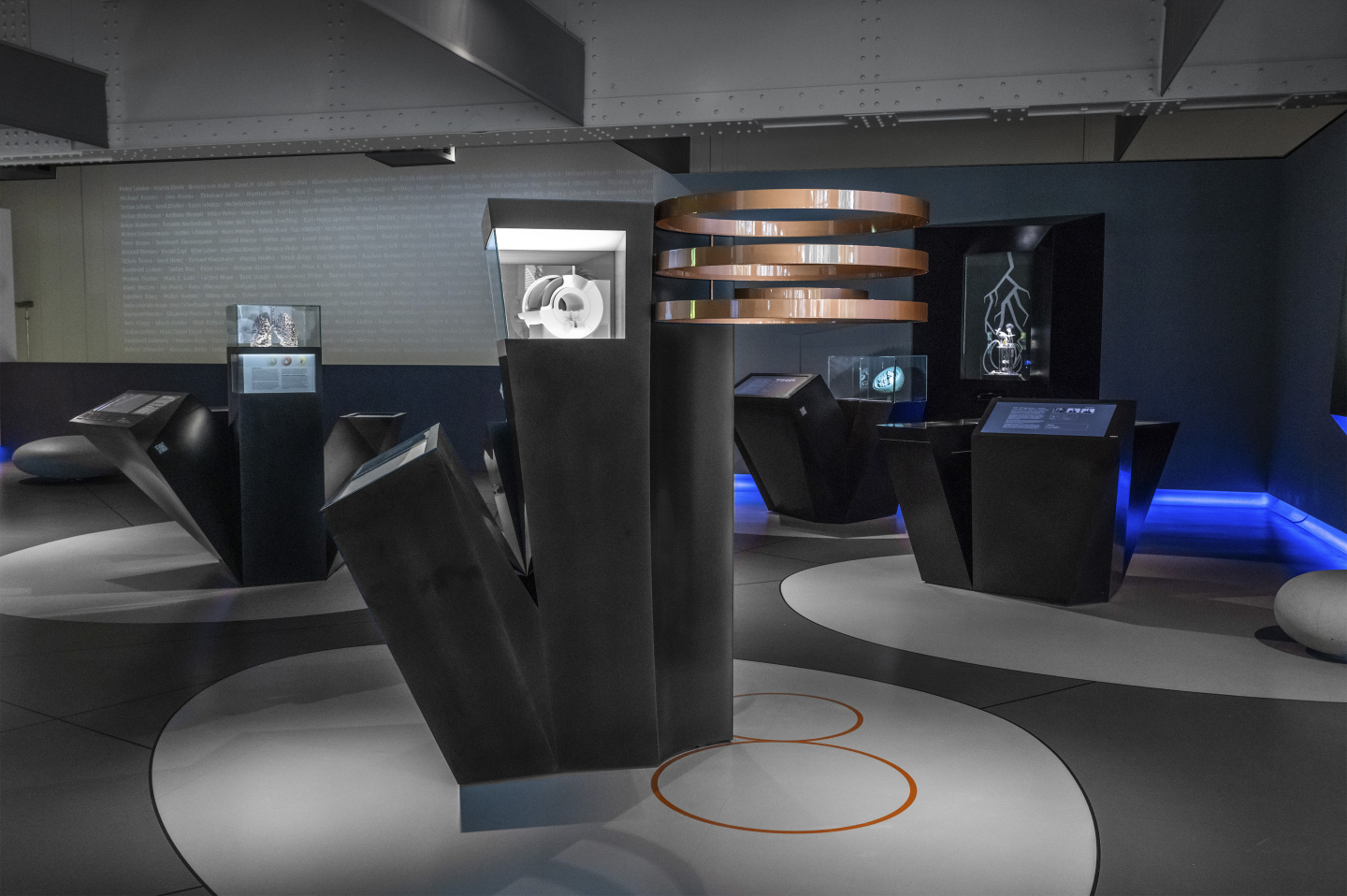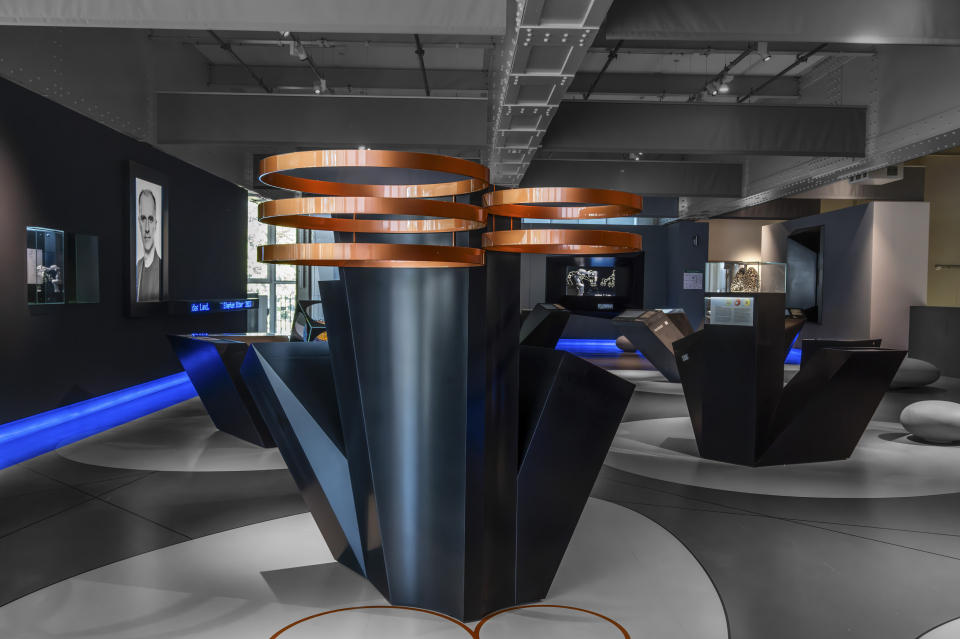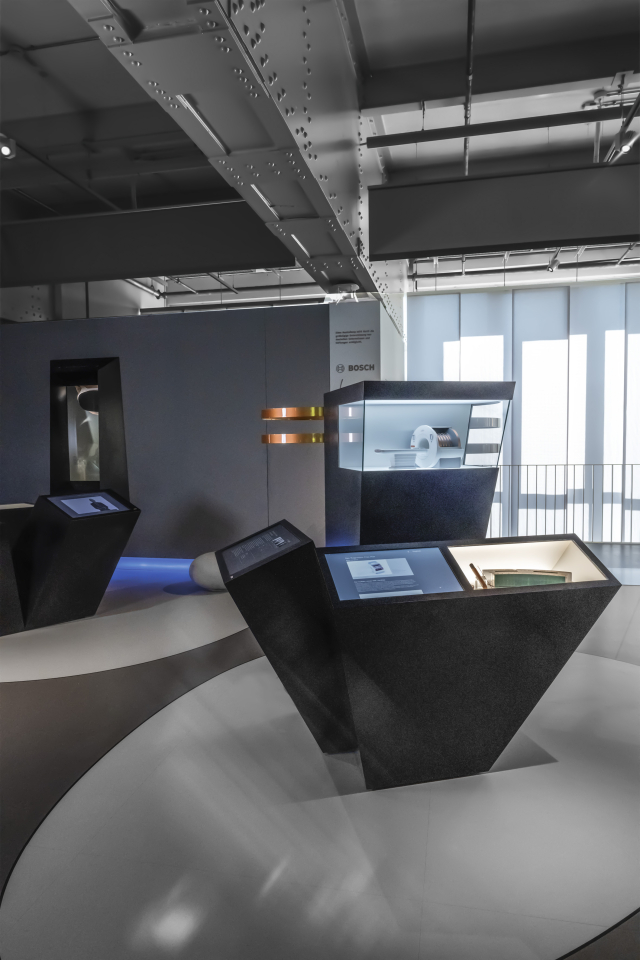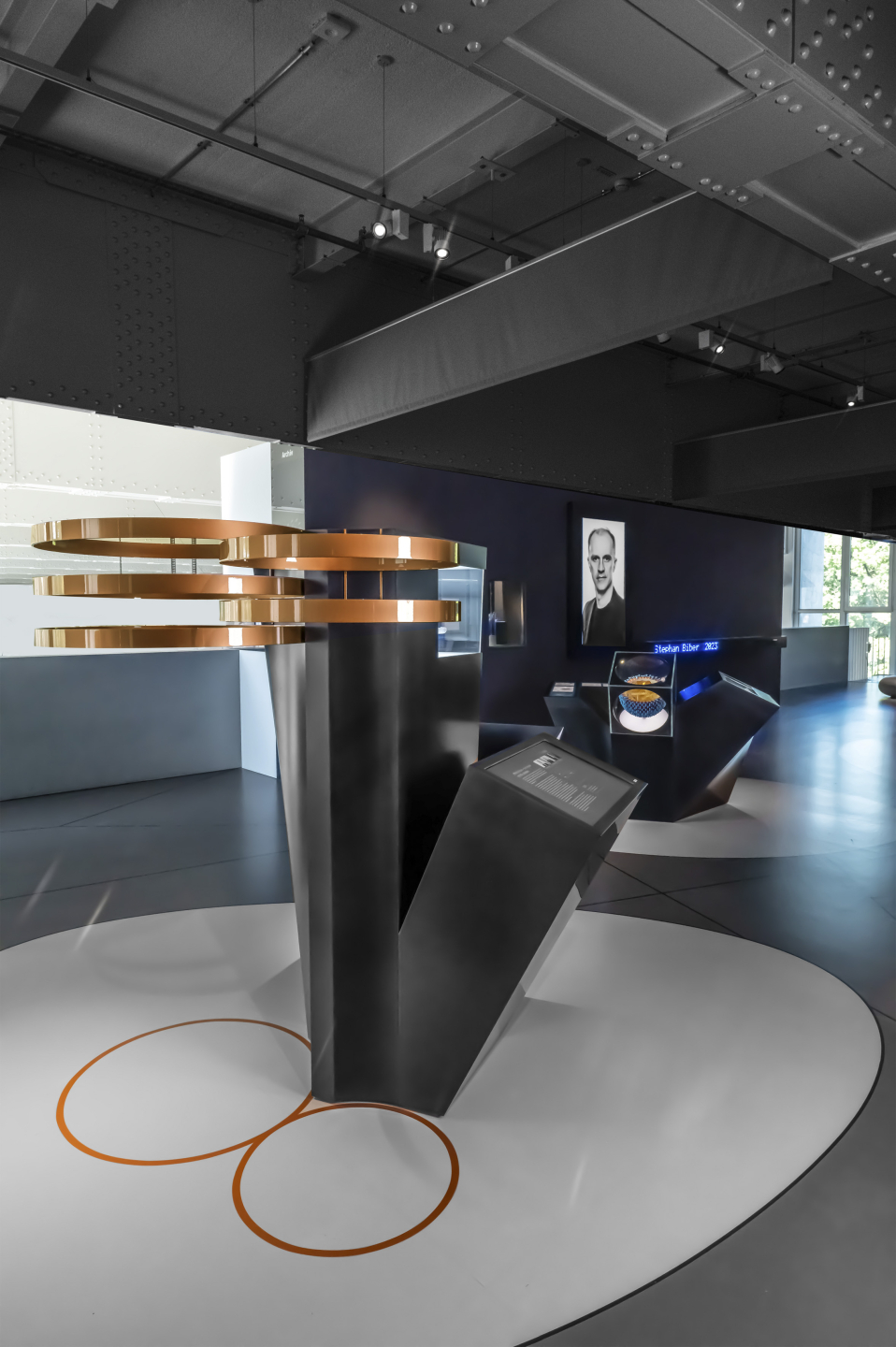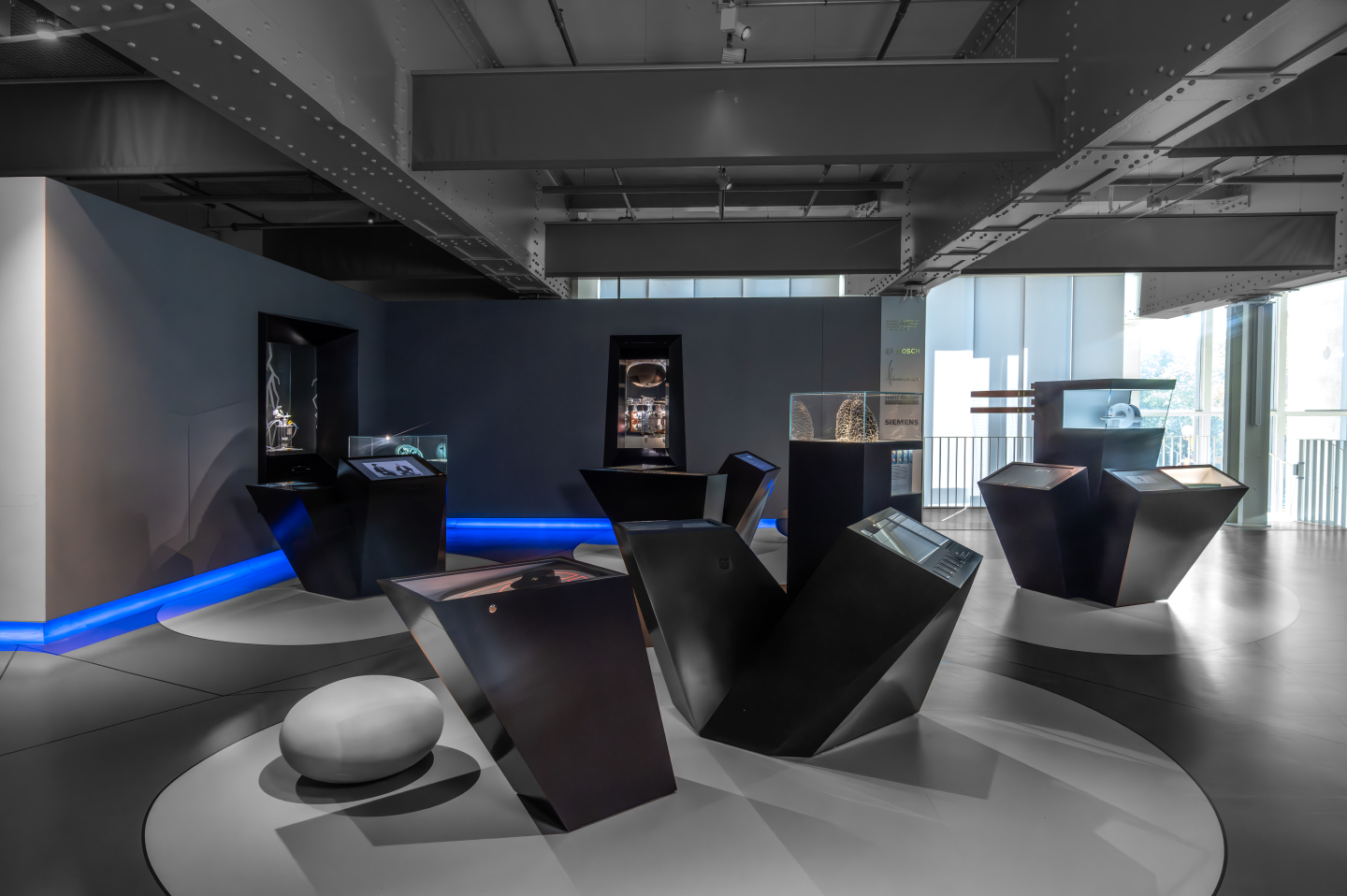Exhibition design
The module of the winners 2023

The principle behind magnetic resonance tomography is based on the magnetic properties of the atomic nuclei of hydrogen. Using a magnetic field, the otherwise randomly orientated spins of the nuclei can be arranged almost fully parallel. They are then diverted from this direction by a pulsed radio wave before returning to the parallel alignment. This releases energy that can be measured as an electromagnetic signal and then converted into an image. These images provide the medical information. The spatial resolution of MRI images increases with the magnetic field strength. In the past, this resulted in a focus on the development of MRI scanners with increasingly higher fields strengths, while, at the same time, the platforms became ever more complex, larger, and heavier – as well as more costly. That is why the use of state-of-the-art, high-resolution magnetic resonance imaging was not possible all over the world.
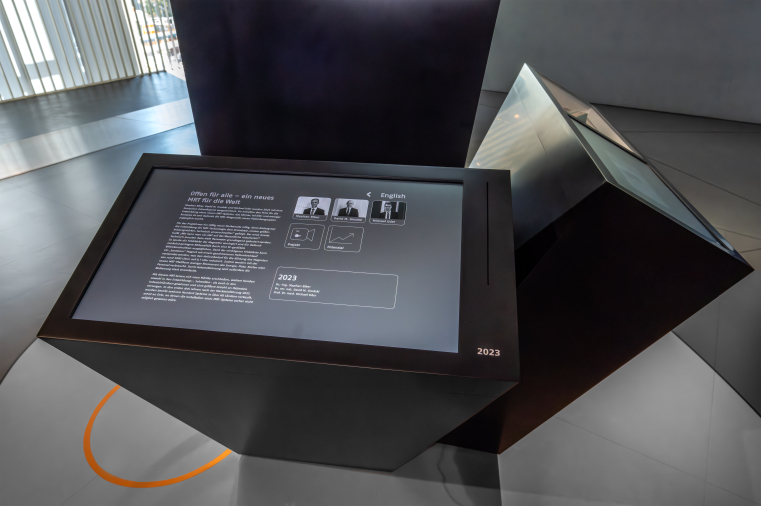
The module representing the 2023 prizewinners emphasizes these elements of the innovation and at the same time fits into the existing design concept. The highly visible copper-colored rings of varying size on the module symbolise this very material part of the success. Visitors can physically experience and recognize the notable difference in tube size, understand the advantage it has for overweight patients or those suffering from anxiety disorders who did not have patient-friendly access to MRI examinations in the past.

 Gebärdensprache
Gebärdensprache
 Leichte Sprache
Leichte Sprache



